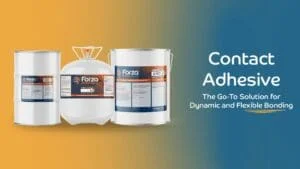What Are PSA’s (Pressure Sensitive Adhesives), and How do They Work?
PSA’s are pressure sensitive adhesives, and as the name suggests, they need pressure to form their bond. Unlike reactive adhesives which need a catalyst to cure, PSA’s provide immediate adhesion and remain permanently tacky once applied.
What are the different types of PSA’s?
- Acrylic
- Solvent-Based
- Water-Based/Emulsion
- Hotmelt
Pressure sensitive adhesives are incredibly versatile and are used across most industries. Some of these industries include transportation, electronics, medical, signage, food production and packaging, as well as general industry. They can provide considerable time savings in manufacturing as they are easy to use and don’t require long cure times.
PSA’s are especially good for temporary bonding, as well as in applications using difficult-to-bond substrates. They can be used in many different applications, from tapes and bandages, to labels and graphics, removable protective film, signage mounting, medical devices and electronics, laying carpet, insulating, to sticky insect and rodent traps, and a wide variety of other manufacturing and product assembly applications. They bond many substrates, including foam, fabric, insulation, carpet tile, paper, metal, glass, wood and even plastic.
So how do you apply pressure sensitive adhesive? Regardless of what type of PSA they are, bonds are made by applying the adhesive to the substrates, and then applying pressure. If inadequate pressure is applied, the bond may not be successful. Depending on the delivery system, PSA’s can be applied in a bead or ribbon, sprayed, or roll coated. Bonds can be made immediately, or in some cases the adhesive can be covered with a release liner to be bonded later. The application of PSA’s can be easily automated, and the equipment is generally simple and easy to use.
How do you go about choosing a PSA for your application? There’s a few different factors to consider, but the end goal is to find the adhesive formula that best suits the needs of your application, while attaining the desired performance in the quickest amount of time at the most reasonable cost. First of all, you should look at the substrates being bonded. Are they porous or non-porous, high-energy or low energy, even or uneven? What are the adhesion requirements, and what thickness of adhesive is needed? And if you’re using pressure sensitive tape, does it need to be single coated, double coated, or transfer tape?
What environments will the adhesive and the finished part be exposed to? Pressure sensitive adhesives are designed to form and hold a bond at room temperatures, so typically have a lower heat resistance than other adhesives, and may lose their tack at low temperatures. Also, will they be exposed to UV rays, humidity, chemicals, water, or other liquids, or extreme heat or flexing? Once you answer all these questions, you should have a fairly accurate idea of what you need, and can find a PSA for your application that checks all the boxes!
Interested in learning more about PSA’s, or wanting to use them in your application? Contact us, we would love to provide you with more information and guide you through to adhesive success!




